Process And Profit
This company quickly transformed itself from a small machine shop to a high value-added supplier largely through the purposeful broadening of its manufacturing process knowledge. The trick was matching company resources with customer needs.
Share




Takumi USA
Featured Content
View More

Autodesk, Inc.
Featured Content
View More.png;maxWidth=45)
DMG MORI - Cincinnati
Featured Content
View More
Only a few years ago Advanced Precision Engineering (Ipswich, Massachusetts) was a small job shop machining parts on inexpensive machine tools in a small garage. There was nothing particularly wrong with that since they were making money. But president and owner Alan Soucy had a different vision for the business. He wanted to move from being a garage operation to becoming a more vertically integrated supplier. He wanted to move beyond cutting parts at the whim of purchasing agents to offer value-added services that appeal to customers' higher manufacturing objectives. This was the way, he believed, to maintain the kind of good margins that would allow him to consistently grow and invest in his business yet still lower customers' total costs through such services as prototyping, manufacturability assessment and process development, producing subassemblies, and just-in-time manufacturing.
With a healthy combination of courage and financing, Mr. Soucy set out to turn his idea into reality. It depended, he knew, not just on building a good attitude toward customer service, but also on building the kind of machining capabilities that would be flexible and efficient enough to deliver the performance his service-oriented business model demanded. He would no longer be competing with low overhead small machine shops. Indeed, he knew he couldn't remain competitive with garage operations as his business grew larger; no one can. But he would have to offer the flexibility those shops deliver when they want to—and do it all the time for all his customers, with consistently high quality, and while keeping an ever vigilant handle on cost control. It was no easy task, and it left virtually no aspect of the business untouched by change. But just five years later what has emerged is the 25,000-square-foot manufacturing enterprise Mr. Soucy envisioned from the beginning.
You can't point to just one or two things to explain Advanced Engineering's success because there's so much this shop does well: Superb process engineering. A meticulously organized and efficient shop. An ISO-certified (9002) quality system. A class 1000 clean room for assembly of computer industry components. Very special relationships with the engineering function at key customers. Rapidly acquired product design expertise. A highly skilled and engaged workforce. What these things all contribute to, however, is the ability to rapidly mobilize the sum total of this shop's formidable resources to the net gain of its customers. Here's how the company built a broader set of manufacturing capabilities, and how they are applied to maximum effect.
Better Equipment, Better Processes
When Advanced embarked upon its transformation, the first order of business was to build more muscle on the shop floor. The existing equipment was old and not productive enough to offer the performance the business needed. Mainly, it was too slow, both in terms of the cutting capability and in tool changes, not to mention the time devoted to setup and part load/unload. "We knew we had to look at a higher level machine," says Mr. Soucy, "even if we had to pay more to get the capability." They also believed it was critical to have as much commonality among the production equipment as possible—which we'll explain later.
Advanced had thus settled on Kitamura (Wheeling, Illinois) as the standard platform for machining centers, which they've been systematically acquiring every year since 1994. Included in the current complement of equipment are two Kitamura Mycenter 0 vertical machining centers, three Mycenter 3 VMCs, four Mycenter 3X VMCs, two Mycenter 4 VMCs, a Bridge 10 VMC, and a Mitsubishi M-H60D horizontal machining center. The machines are by no means the cheapest in their class, but Mr. Soucy indeed believes that their higher function is consistent with capabilities he wants to have in place across the shop.
For one thing, the machines are fast, with X-Y rapid rates on the Kitamuras ranging from 945 to 1575 ipm, depending on the model. Most have 10,000-rpm spindles and very fast toolchangers. Many also have pallet changers, which are still not all that common on vertical machining centers. But it's not just about speed. "We've had fast machines before, but they couldn't cut," says Mr. Soucy. "We might start 8,000 rpm, but they'd quickly bog down to five (thousand)." The newer VMCs also have heavier and more accurate cutting capabilities than you expect on machines traveling at those speeds, with box way constructions on the larger machines and better-than-normal torque delivery at the lower end of the speed range. For a job shop cutting everything from light aluminum to tough stainless steels, the combination of speed and torque is a necessity.
Having this broader range of machining capability provides Advanced with both more productivity and flexibility in their machining processes, an advantage they put to good use. As equipment was upgraded, they systematically re-examined existing machining processes and standard methods to make the most of their new capabilities. That meant boosting feeds and speeds, certainly, but it also brought more scrutiny to other aspects of the process. "Some of these machines have 2-second pallet changers," says Mr. Soucy. "That, combined with higher machining rates, creates a real incentive to build a better fixture." It also allows many workpiece features to be generated to a given tolerance level with a more efficient process. Holes are a good example. Says Mr. Soucy, "If we had to hold more than five `tenths' on our old equipment, we'd have to bore the hole. Now, unless it's a really tight tolerance, we just interpolate it."
Uncommon Commonality
A better machining process is the fundamental tool that underlies Advanced's ability to perform. But they need more than that to differentiate themselves from the pack. "Anyone can buy machines; we're selling labor and capacity," says Mr. Soucy. So, what truly matters is how effectively they deploy that labor and capacity to deliver maximum value to their customers. And it is here that Advanced truly excels.
There are several important principles in play at the shop. Perhaps foremost among them is how they manage capacity. Rather than placing the emphasis on maximum utilization of their assets—though they do that quite well too—the key is to maintain emergency capacity that can be deployed at a moment's notice. This as much as anything allows the shop to remain flexible to customers' delivery requirements, many of which are difficult or impossible to manage without elaborate planning systems.
Does that mean the shop is stocked with idle machines just waiting for a hot order? Not at all. Mr. Soucy's approach is to maintain a uniformity and redundancy of production capability across the shop, particularly in milling and turning processes so that they are seldom dependent on a single machine. "With the exception of very expensive machines—a half million (dollars) or more—we never buy one of anything," he says. The "companion" machines allow production work to be moved easily from one machine to another without sacrificing setup and running efficiency or quality. It's not just that these machines are similarly capable, they are truly identical, right down to the ability to interchange part programs without having to regenerate postprocessors if a job is moved from one machine to another.
Having identical controls is particularly advantageous for the way that Advanced prepares and executes jobs—a system with equal measures of thorough preplanning and on-the-fly adaptation to the realities of the process that can't be proved anywhere other than the shop floor. Like many shops, the initial job planning and part programming happens off-line, though consultation with machinists on job planning is common. Optimization of machining routines is entirely within the domain of the machinists, however. Indeed, they are expected to play a major role in continuous process improvement.
Each job is kitted in the tool crib for the machinist, meaning that all job documentation, tooling and material is prepared and delivered to the workcenter well before the setup is to begin. Typically, three jobs will be in cue for each machine at any time. The tool crib attendant has direct access to all part programs via the shop's DNC system, and thus can look at the tool lists for the current running job and the next job to determine what additional tools will be required for the next setup. He prepares the tools, loads them in a cart along with the job documentation and fixturing, and delivers it all to the workstation. The operator never has to leave his machine.
Rather than presetting the tools in the crib, Mr. Soucy feels it is just as efficient to establish tool offsets right on the machine. It's another advantage of common equipment. All the machines have the same "TLO" tool location offset features on their Yasnac controls, meaning that tools are touched off automatically on a machine-mounted sensor with a single command. Thus each tool setup procedure is exactly the same on all the Kitamura machining centers, and can generally be accomplished quickly, depending on how many new tools must be loaded. They do their best to gang like-tooled jobs together, which means that loading tools usually takes just a few minutes.
Because operators are responsible for both the quality and the efficiency of a process, they have a great deal of latitude to edit part programs as they see fit. "They are all skilled machinists, and they are right there," says Mr. Soucy. "It's their responsibility to change what needs to be changed." And it is this shop-proven program that will be archived for the next run of the job, no questions asked.
This principle of standardization is applied across the shop wherever possible and in particular with shopfloor personnel. "We keep away from specializing the operator," says Mr. Soucy. All are skilled machinists, both for the flexibility they provide, and for the broad contributions they can make toward continuous improvement. Knowing a lot only about a little area is only marginally useful in this shop's holistic approach. They want people who can understand the entire process, people who can figure out how to fit all the pieces together in the best possible way. Moreover, by having interchangeable assets—both human and technical—they all get utilized at very high levels, and can be applied easily to shifting patterns of demand.
Spreading Out
One area where Advanced doesn't worry about machine utilization is in the prototyping cell. Here they keep a combination of manual and CNC milling machines as well as appropriate turning equipment at the ready to help the shop's best customers execute rapid product development.
There are many strategic reasons why hard prototyping—as opposed to making plastic models through stereolithography or other rapid prototyping processes—makes so much sense for the business. Most obviously, a company that wants a machined prototype is itself nearing production of a new end product if all goes well. Prototypes frequently turn into production orders for Advanced, and sometimes in a remarkably short period of time. And here, having an equally firm command of the prototype and production manufacturing process offers greater service value to customers.
A good example of this capability in action was a new subassembly that was conceived, but not completely designed. The customer was in a hurry to get a working component built, and the best case scenario through all other channels was to get a prototype in six weeks. Advanced was able to do it in three. Not only did they get the prototype, they also landed the subsequent production work they would otherwise never have had a shot at.
Even more important than having first crack at a production order is the learning and enhanced customer relationships that being part of the product development process fosters. For one thing, when it comes time for production, they are already intricately familiar with all the qualitative requirements for the job, facilitating a quicker and smoother course through production process planning. But it goes much deeper than that. Advanced frequently participates in the process of evaluating product designs from the standpoint of determining the cost ramifications of the various workpiece attributes and tolerances, providing the opportunity to generate value far beyond the shop's ability to make chips.
Of course, many a shop manager has longed for a shot at having a heart-to-heart with whoever had control of a workpiece design. The question is: How does Advanced get the access, and how do they get themselves listened to? Mr. Soucy says it boils down to confidence that's been built up over time. The first step is taking an interest in the customer's real needs. Advanced makes it their business to understand the functional requirements of the part, and to question needlessly difficult-to-machine features or in some cases to suggest adding features that may enhance the machining or assembly process. "You have to be proactive with the customer," he says. "We get preliminary prints from the customer whenever we can, and make a point of clarifying any vague points with the engineer. We ask a lot of questions, like: `Do you really need this kind of tolerance?'"
Now Advanced has a proven track record of creative cost reduction that is recognized and appreciated by their good customers, and that is good business for the supplier. "We're cutting cost on the part, not cutting our margin," says Mr. Soucy. "A lot of suppliers are afraid to do that. They think that if you find a way to cut cost for a customer one time that they'll constantly cut you up for more and more. But we embrace it, and for the most part our customers have been very loyal. When they come back for price, we do that through continual process improvement. Besides, you don't have to be cheap if you have the quality and the delivery."
But you do have to have customers that have a sense of their total costs. Fortunately for Advanced, some of their customers do, and that is what led the company into the subassembly business, which is essentially an extension of what they were already doing with single part prototype and manufacturability issues. It began a few years back with a customer who'd been urging the shop to broaden their value-added services. The customer—a manufacturer of wafer processing equipment for the computer industry—had too much overhead tied up in assembly and not enough engineering resources to keep their own market responsiveness at the level they desired. That resulted in Advanced taking a sketchy design for a positioning table, which they then detailed and created a prototype. It was, in fact, the previously mentioned job that got done in three weeks, faster than the customer could do the design work alone.
The job has led to others, and other equipment and capabilities, as well as the realization on Mr. Soucy's part that there might be far more opportunity in high tech assembly work. That led to a study of the regional market for even greater services, and Mr. Soucy found that there was great potential for contract clean room assembly services in the area. So he built one. It took two months to land the first order, but now the company is actively and profitably engaged in a contract business with very little competition.
Control
Bringing design and assembly functions into a job shop environment does considerably complicate management, and Advanced has encountered its share of growing pains along the way. While that's not exactly why the shop first considered going through the ISO 9002 certification process, it's been invaluable in helping management keep a grip on the business.
The first reason to get certified, which was started in early 1996 and completed in 1997—was one of pure pragmatism. It was mandatory to continue doing business with some key customers. But Mr. Soucy and quality assurance manager Rick Ludwick soon came to see ISO as the tool that brought a new level of discipline to a business that was growing more chaotic by the day. "In a couple years we went from a mom-and-pop shop to a pretty good size business," says Mr. Soucy. Add to that the substantially more complicated operational requirements of assembly work, and leadtimes that were growing progressively shorter.
ISO forced the company to take stock of all their procedures, and to bring them into a consistent alignment. It was that thorough housecleaning that most shops always seem to be too busy to get done, yet the lack of which keeps them from ever getting under control. ISO brought precisely that level of control to Advanced, and it continues to pay dividends. "It brings consistency to your management process, not just in terms of quality, but from a business standpoint," says Mr. Ludwick. "You always do things the same way, and know the state of the business at all times. It also provides great traceability for your work, and is a great way to track effective yields."
Bottom line, Advanced is today one of the most organized manufacturing facilities you'll find anywhere, and that is critical to their ability to perform to demanding customer standards. Perhaps the most important benchmark by which they measure that performance is on-time delivery, which consistently stays above 99 percent. Indeed, the company had one 15-week period earlier this year where they did not miss a single delivery—a perfect record over some 1800 orders.
But perfection is a tricky target, always moving just when you think you have it in your sights. So the search goes on, sometimes looking for greater systemization where it makes sense, other times looking for the little tricks that end up yielding the process improvements they continuously seek. Many times these ideas are generated internally, but they're not so proud that they won't take a good one from just about anyone. To that end, Advanced tries to foster the kind relationships with their suppliers that they do with their customers.
In some cases, Advanced will ask for a formal evaluation of the shop's practice to see what can be improved. A good example is the fluid management program that was developed in conjunction with A.W. Chesterton (Stoneham, Massachusetts). They began the initiative looking for a solution to a rancid machine tool sump, and ended up taking stock of fluid use throughout the company's entire manufacturing process, from machining coolants on through parts cleaning. Now they have coolant specially formulated for the shop's mix of machining practice and materials, and a cleaning compound specially formulated for the coolant. While that may strike some shop managers as overly fussy, and needlessly costly, Mr. Soucy and Mr. Ludwick see it as an investment that's more than paid for itself. First of all, the evaluation showed that Advanced had been using overcon-centrated coolant all along—knowledge that immediately cut their coolant acquisition cost in half. The discipline of better coolant management has also paid dividends, they believe, in better quality, longer tool life, and certainly in a better work environment for the employees.
Advanced also gets a lot of help with basic process issues. A favorite example of Mr. Soucy's was a troublesome application in which they were drilling a 2.8-inch diameter hole 8 inches deep in 316 stainless steel. It was taking nearly an hour to finish a single hole. Then Mr. Soucy discussed the problem with his primary cutting tool supplier, Jim Burd of American Tool Supply (Chicopee, Massachusetts), as he does with many process problems. The supplier suggested an alternative drill and the addition of high-pressure coolant through the tool. That cut the cycle time down to 8 minutes.
Advanced would have eventually come across a process solution on their own. But because the supplier helped them solve a problem quickly, they were spared the management resource it would have taken, not to mention all the costly holes that would have been made in the meantime. Mr. Soucy knows full well what that kind of help means to his business. It's exactly the kind of service his business is structured to offer his customers too.
Read Next
Building Out a Foundation for Student Machinists
Autodesk and Haas have teamed up to produce an introductory course for students that covers the basics of CAD, CAM and CNC while providing them with a portfolio part.
Read MoreRegistration Now Open for the Precision Machining Technology Show (PMTS) 2025
The precision machining industry’s premier event returns to Cleveland, OH, April 1-3.
Read More5 Rules of Thumb for Buying CNC Machine Tools
Use these tips to carefully plan your machine tool purchases and to avoid regretting your decision later.
Read More



























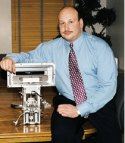
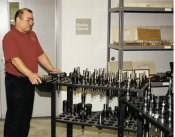
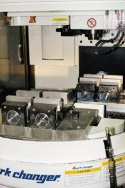
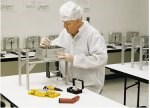
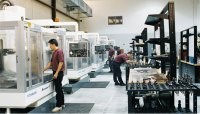
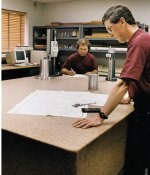












.jpg;maxWidth=300;quality=90)









